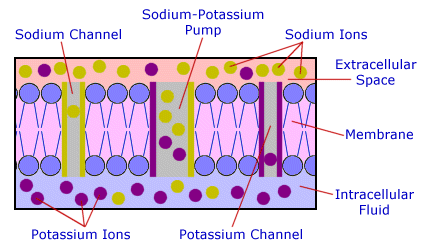sodium-potassium pump

Sodium-potassium pump. Image credit: Columbia University.
The sodium-potassium pump is a mechanism of active transport that moves potassium ions into and sodium ions out of a cell along a protein (or enzyme) channel. It is found in all human cells, but is especially important in nerve and muscle cells.
The sodium-potassium pump uses active transport, with energy supplied by ATP (adenosine triphosphate) molecules, to move 3 sodium ions to the outside of the cell for each 2 potassium ions that it moves in. One third of the body's energy expenditure is used in this process.


